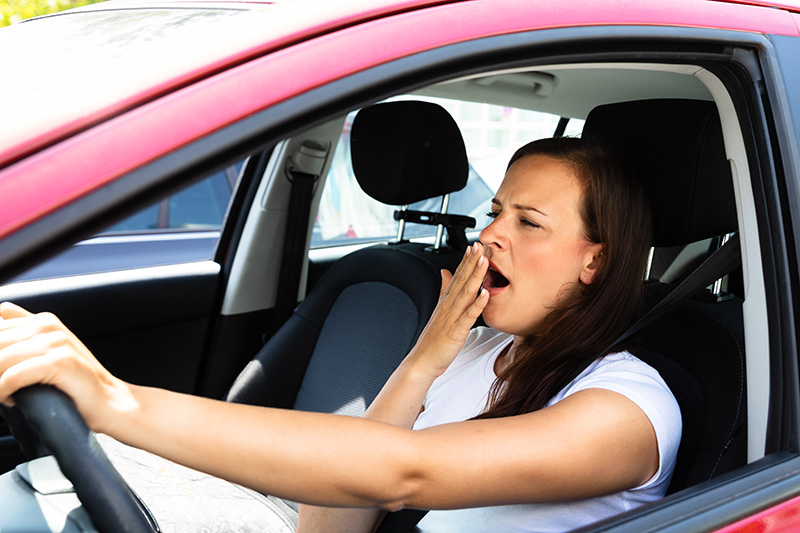Have you ever fallen asleep behind the wheel? According to the Centers for Disease Control and Prevention (CDC), 1 out of every 25 people say they’ve done so at least once—and that number is likely underreported.
This surprising fact shows why drowsy driving is a major safety concern. Motor vehicle crashes are one of the most common causes of injury that bring people to Grand View Health’s Level II Adult Trauma Center. And drowsy driving causes about 100,000 crashes, 71,000 injuries and 1,500 fatalities annually nationwide.
The risk for drowsy driving goes up when we turn back our clocks each autumn at the end of Daylight Saving Time. To help keep you safe, the Trauma Team at Grand View Health offers these facts and tips.
What is drowsy driving?
It’s driving a motor vehicle when you feel sleepy. Falling asleep behind the wheel for just a few seconds can bring devastating results. A car traveling at 55 miles per hour travels 100 yards every 5 seconds. That’s more than enough time to collide with another vehicle or run off the road should you fall asleep.
When do drowsy driving accidents occur?
They can happen at any time, but the highest risk occurs between midnight and 6 a.m. and again in the late afternoon.
Why is drowsy driving dangerous?
When you’re tired behind the wheel, it decreases your awareness of your surroundings, impairs your reaction times and slows your ability to make decisions.
What causes drowsy driving?
The biggest culprit is a lack of sleep. Experts recommend getting seven to eight hours of sleep each night. That’s not easy for everyone, especially for shift workers. But getting a good night’s sleep is of utmost importance when it comes to safe driving habits.
According to the CDC, driving while being awake for 18 hours straight is similar to driving with a blood alcohol content (BAC) of 0.05%. If you’ve been awake for 24 straight hours, it’s similar to driving with a BAC of 0.10%.
Other common causes of drowsy driving include:
- Sleep apnea
- Prescription and over-the-counter medications that may cause drowsiness
- Alcohol use
What are the warning signs of drowsy driving?
- Yawning
- Feeling sleepy or the need to fall asleep
- Eyes feeling tired
- Drifting lanes on or off the road
- Inability to remember recent parts of your drive, such as directional signs or highway exits
How do you prevent drowsy driving?
- Develop sleep patterns so you can sleep seven-to-eight hours each night
- Limit the number of driving hours on long trips
- Avoid driving between midnight and 6 a.m.
- Know your medications and how they affect you
- Avoid alcohol and medications that affect your alertness
Most importantly, if you feel drowsy, pull off the road and take a short nap or stop driving for the day.
For more tips and resources, check out the National Sleep Foundation, which promotes Drowsy Driving Prevention Week each year when Daylight Saving Time ends.

